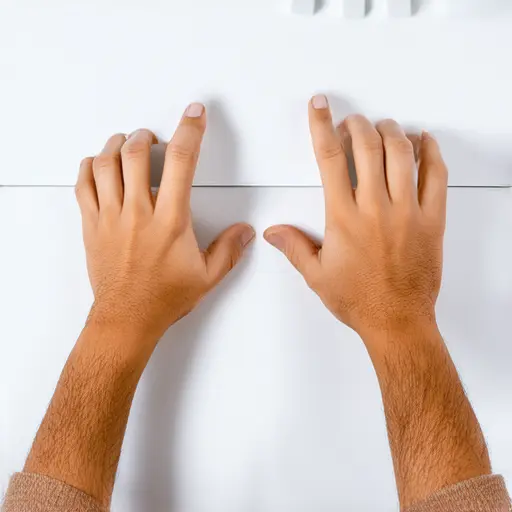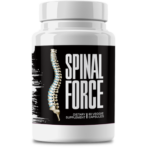This Village-Made Chinese Pain Reliever Eliminates Back And Joint Pain!
My Hands Hurt After Typing? Try These Ergonomic Tips

Hands Hurting After Typing? Here’s How to Find Relief (And Keep It From Coming Back)
Ever finished a long typing session only to think, "Wow, my hands really hurt"? You're definitely not alone. Whether you're crunching numbers, writing reports, or coding for hours, that nagging hand pain can sneak up on anyone. What starts as mild discomfort can turn into serious pain if left unchecked—but here's the good news. With some simple ergonomic tweaks, smart stretches, and better habits, you can kiss typing pain goodbye. Let's dive into why your hands hurt, how to soothe the ache, and most importantly, how to prevent it from happening again.
Why Your Hands Protest After Typing
Your hands aren't being dramatic—that pain usually comes from doing the same motions over and over in less-than-ideal conditions. Figuring out the "why" is half the battle.
What's Really Causing That Ache?
Several culprits could be behind your typing troubles:
- Groundhog Day Syndrome: Repeating the same keystrokes endlessly tires out your muscles and tendons.
- The Slouch Effect: Poor posture (we've all been there) puts extra stress on your wrists and joints.
- Keyboard Rage: Pounding those keys like they owe you money? That extra force adds up.
- Bad Gear: That free keyboard from 2005 might be costing you in hand pain.
How Your Setup Might Be Working Against You
An awkward workspace is like asking your hands to do gymnastics while typing. Bent wrists? That's like putting a kink in a garden hose—everything slows down and nerves get cranky.
Red Flags You're Developing RSI
If these sound familiar, it's time to pay attention:
- That dull ache that won't quit
- Pins-and-needles feeling (your nerves sending SOS signals)
- Suddenly dropping coffee cups more often
- Morning stiffness that typing makes worse
Quick Fixes When Your Hands Are Screaming "Enough!"
Already in pain? Try these relief tactics stat.
Stretches That Actually Help
These moves are like a mini massage for your hands:
- The "Stop Traffic" Stretch: Hold your arm out, palm down like a crossing guard. Gently pull back your fingers with your other hand—hold for 15 seconds of sweet relief.
- Jazz Hands: Spread those fingers wide like you're the star of a musical, hold for 5 seconds, relax. Repeat until you feel looser.
- Thumb War Prep: Gently pull your thumb away from your hand to ease tension at the base.
Heat vs. Ice: Which Wins?
Warmth relaxes tired muscles (try a rice sock heated in the microwave), while ice is your go-to if there's swelling (frozen peas work great in a pinch).
When to Reach for Pain Meds
NSAIDs can take the edge off, but they're not a long-term solution. If you're popping pills regularly, it's doctor time.
Setting Up Your Workspace for Happy Hands
An ounce of prevention is worth a pound of hand cream.
Keyboard and Mouse Feng Shui
Keep your keyboard at elbow height—no reaching or awkward angles. Your mouse should live close enough that you're not doing mini arm workouts all day.
The Goldilocks Wrist Position
Not too bent up, not too bent down—just right in that neutral sweet spot. Wrist rests? Great for pauses, but don't type while using them.
Is Ergonomic Gear Worth the Hype?
Split keyboards and vertical mice can be game-changers by letting your hands work in more natural positions. Your future self might thank you.
When to Call in the Pros
Sometimes DIY isn't enough—here's when to seek help.
Signs It's More Than Just Typing Fatigue
Don't tough it out if you notice:
- Lightning-bolt sharp pains
- Numbness that won't fade
- Visible swelling or joints looking wonky
What Happens at the Doctor's Office
They might check your nerve function, order scans, or send you to a specialist who deals with hands all day.
Beyond the Waiting Room
Physical therapists can teach you targeted exercises, suggest splints, or help redesign your workspace for less strain.
Breaking Bad (Typing) Habits
Small tweaks to how you type can make a big difference.
Why You Should Stop Punishing Your Keyboard
Typing like you're playing whack-a-mole? Ease up—mechanical keyboards can help by giving better feedback so you don't bottom out keys.
The Magic of Taking Breaks
Set a timer—every hour, take five to stretch and shake out your hands. Your typing speed can actually improve when you slow down occasionally.
Remember Those Typing Class Lessons?
Proper finger placement isn't just for school—it helps distribute the workload evenly across all your digits.
Gear That Actually Helps
Sometimes the right tools make all the difference.
Wrist Rests: Friend or Foe?
Great for resting between typing bursts, but don't let them become a crutch during actual typing.
The Weird-Looking Gadgets That Work
Yes, split keyboards look like something from a sci-fi movie, but many people swear by them for reducing strain.
Give Your Hands a Vacation
Voice dictation software has come a long way—perfect for when your hands need a break but your work can't wait.
Keeping the Pain Away for Good
Think of this as retirement planning for your hands.
Building Hand Resilience
Simple exercises with resistance bands or grip tools can help your hands handle more typing with less complaint.
Beyond the Desk
Stay hydrated, keep moving throughout the day, and mix up your activities—your hands aren't meant to just type 24/7.
The Perfect Workspace Formula
It's all about alignment—chair, desk, and monitor heights that keep everything in harmony without straining.
Wrapping It Up
If "my hands hurt" is becoming your daily mantra, don't ignore it. Start with one change today—maybe a stretch break or adjusting your chair height. Your hands do so much for you—they deserve some TLC!
Quick Tips to Remember
- Keep wrists neutral—no bendy straw positions
- Move it or lose it—regular breaks are non-negotiable
- Good gear is an investment, not an expense
Final Word
Hand pain doesn't have to be the price you pay for desk work. With some awareness and these changes, you can type comfortably for years to come. Now go give those hardworking hands a break!








